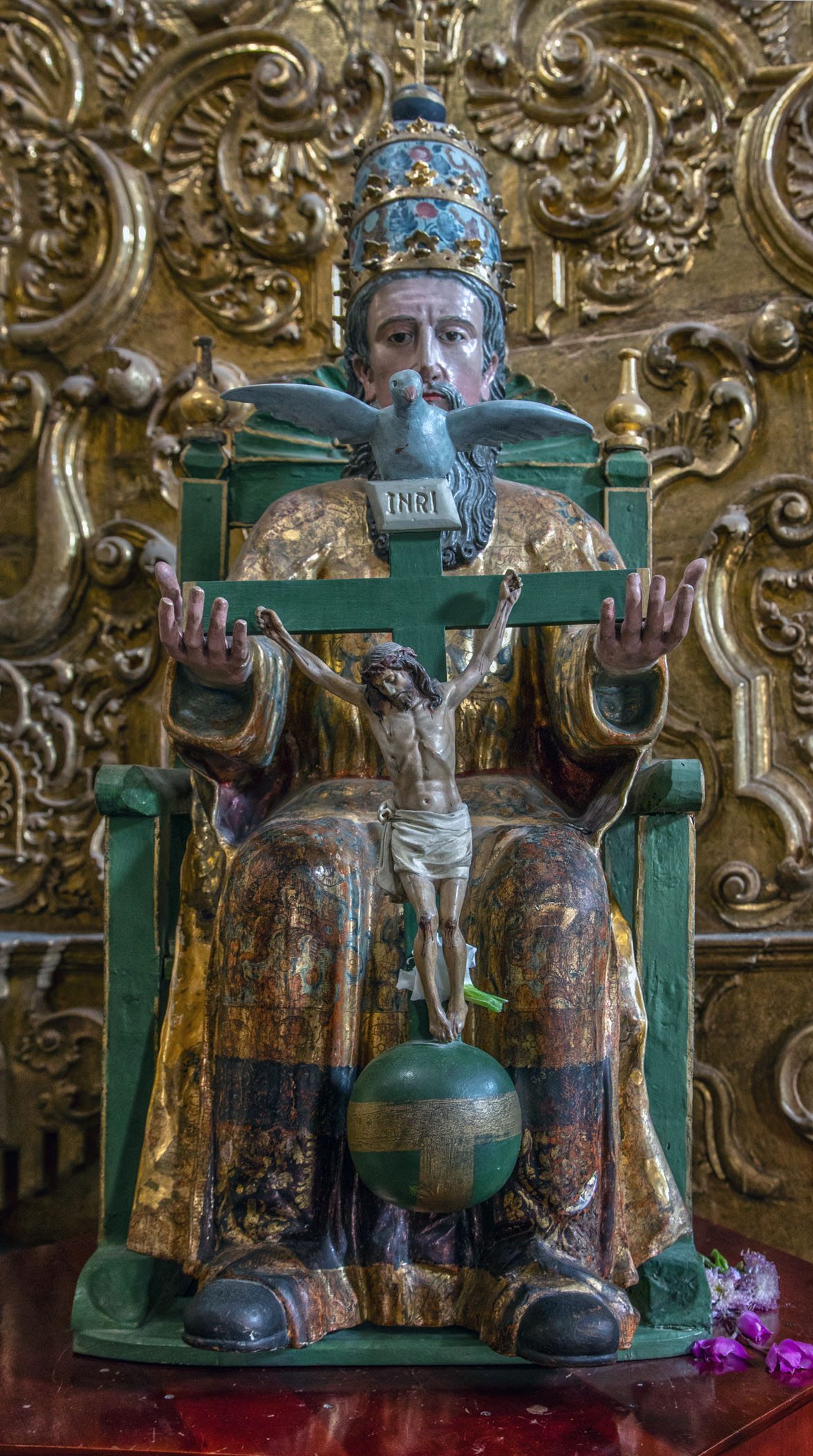Templo de la Virgen de la Asunción y Capilla del Señor, Tlacolula
Santo statues and statuettes, carved in the round, are commonly known as revultos or informally as bultos. They are usually made of wood. Larger scenic pieces, including multiple statues or done in bas relief, or simply painted on wood panels, and which may include non-figural iconography, are called retablos
Among bultos, two distinct types are often noted, the bastidor ('frame', 'structure') style, a mannequin intended to be dressed with clothing and accessories, and the detallado ('detailed') style, with adornments painted on permanently.*
Bastidor with Ex Voto
Detallado
Cristos Negros
The veneration of “Cristos Negros,” literally “black Christs” is to images of Jesus on the cross which are black in color. The spread of Cristo Negro shrines or sanctuaries have mostly been confined to Central America, southern Mexico (especially Chiapas and Oaxaca), with some important images near Mexico City and one in New Mexico.
Cristo Negros or Black Christs of Central America and Mexico trace their origins to the veneration of an image of Christ on a cross located in the Guatemalan town of Esquipulas, near the Honduran and El Salvadoran border. This image was sculpted in 1595 in wood and over time it blackened and gained a reputation for being miraculous.*
*Wikipedia





